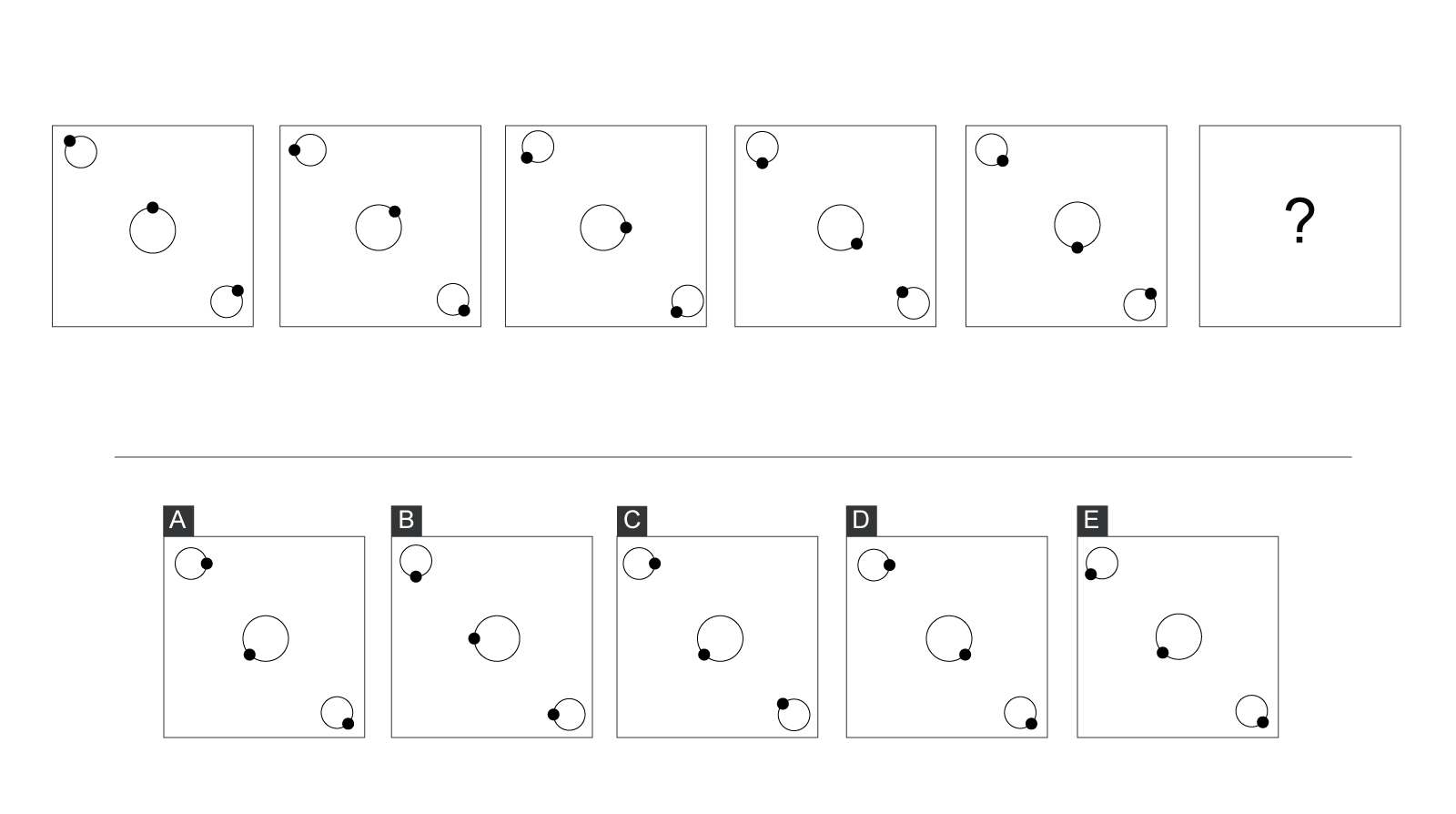
Most candidates believe that besides the correct answer option, all the answer options are random gibberish - created to confuse you. This is only 50% correct - they are there to confuse you, but they are definitely not random.
As you might know, every abstract reasoning question has a layered structure (like an onion) - the layers of rules are built on top of each other. The following item for example is made up of three rules:

Rule 1: The large circle rotates 45 degrees in a clockwise direction each turn.
Rule 2: The left circle rotates anticlockwise.
Rule 3: The right circle rotates twice in a clockwise direction.
The correct answer is A.
Let's take a look at the other answer options:
B: The large circle rotated twice instead of once - left circle rotated in a wrong direction.
C: The right circle rotated in the wrong direction - left / large circle are in their correct position.
D: Large circle rotated in the wrong direction - left / right circle in correct position.
E: Left circle rotated in wrong direction - rigth / large circle in correct position.
As you can see, besides option B, each answer option is just almost right. They all follow the rules up until the very end, before making a small mistake.
You might think "but hey, this only makes my job harder, because they are all almost right!", and you would be right. But the thing to understand here is that you can use this to your advantage!
Look at the answer options above and notice how on A, C and D the left circle looks the same. Or how the large circle looks the same on A, C and E.
If you see that a given item looks like X on most of the answer options - chances are pretty good that then X is how that item should look like!
It is very important to note that relying exclusively on this method can (and will) lead you to wrong answers. Making assumptions based only on frequency without reinforcing these with understood rules won't get you far.
So use the above mentioned "trick" with caution!